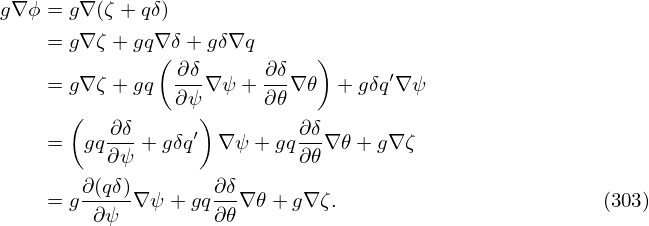
In GEM[7] and GENE[13] codes, the field-aligned coordinates (x,y,z) are defined by
 | (308) |
 | (309) |
 | (310) |
where r is an arbitrary flux surface label with length dimension, which is often chosen in GEM to be the minor radius of a magnetic surface in the midplane. Here r0 and R0 are constant quantities of length dimension, r0 is the minor radius of a reference magnetic surface (usually corresponding to the center of the radial simulation box), R0 is the major radius of the magnetic axis, q0 is the safety factor value on the r = r0 surface. The constant length q0R0 introduced in the definition of z is to make z approximately correspond to the length along the field line in the large-aspect ratio limit. The constant length r0∕q0 introduced in the definition of y is to make y corresponds to the arc-length in the poloidal plane traced by a field line when its usual toroidal angle increment Δϕ is α. This explanation makes y look like a poloidal coordinate whereas y is actually a toroidal coordinate.
Next, let us calculate the wave number along the y direction, ky, for a mode with toroidal wave number n. The wavelength along the y direction, λy, is given by
 | (311) |
Then the wavenumber ky is written as
 | (312) |
On the other hand, the poloidal wavenumber k𝜃 is given by
 | (313) |
where m is the poloidal mode number of the mode in (ψ,𝜃,ϕ) coordinates. If the mode has the property k∥≈ 0, i.e., m ≈ nq0, then k𝜃 is equal to the ky. The motivation of introducing the constant length r0∕q0 in the definition of y is to make ky ≈ k𝜃 for a mode with k∥≈ 0.
Some authors call ky or k𝜃 by the name “binormal wavenumber”, which is not an appropriate name in my opinion. Some authors call y the binormal direction, which is also an inappropriate name since neither ∇y nor ∂r∕∂y is along the binormal direction B0 ×∇ψ.